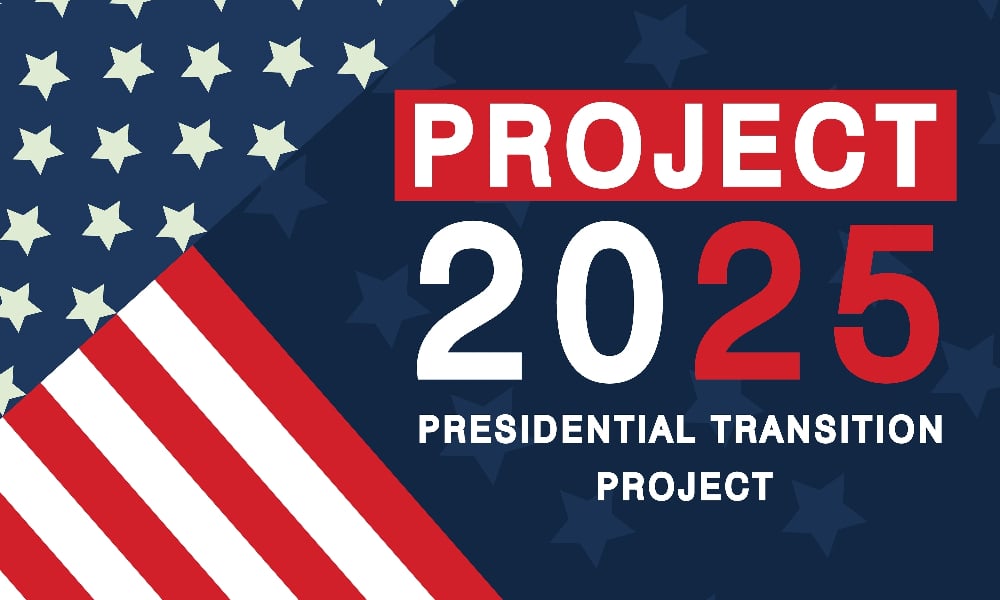Estimated reading time: 6 minutes
Table of contents
- What Is Project 2025? How This Conservative Blueprint Could Shape Trump’s Second Term
What Is Project 2025? How This Conservative Blueprint Could Shape Trump’s Second Term
With Donald Trump’s projected victory over Kamala Harris in the 2024 election, Project 2025 has garnered renewed attention. This initiative, led by the Heritage Foundation, presents a sweeping vision for reshaping the federal government under conservative control. Project 2025 includes policy proposals aimed at transforming key federal agencies, restricting certain civil liberties, and implementing conservative ideals across government sectors. Here’s everything you need to know about Project 2025 and what it could mean for the U.S. — especially for LGBTQ+ Americans.
What Is Project 2025?
Project 2025 is a strategic plan developed by the Heritage Foundation and other conservative groups to guide the next Republican administration. Comprising four key pillars, the project offers a roadmap for implementing conservative policies swiftly:
- Policy Guide: A nearly 900-page document, Mandate for Leadership 2025, outlines recommendations for restructuring federal departments, altering policies, and enforcing a conservative agenda.
- Personnel Database: A comprehensive LinkedIn-style registry, vetting potential appointees who align with conservative values, to ensure ideological loyalty within the administration.
- Presidential Administration Academy: Training for approved personnel to prepare them for roles within federal agencies under the next administration.
- First 180 Days Playbook: A guide for actions to be taken in the first six months, aiming to implement key changes before opposition builds.
The Origins of Project 2025
Project 2025 builds on the Heritage Foundation’s previous policy frameworks. Heritage crafted a similar guide before Trump’s first term, with over 60% of those recommendations eventually implemented by his administration. Mandate for Leadership 2025 includes contributions from former Trump administration officials, such as Paul Dans and Spencer Chretien, who served key roles in Trump’s first term. Notably, figures like Roger Severino, known for his anti-LGBTQ+ positions, contributed to the project.
Though Trump has distanced himself from Project 2025 publicly, Democrats argue that the initiative aligns closely with Trump’s campaign platform and would likely shape his agenda if he fully adopts it in office.
Key Elements of Project 2025
Project 2025 aims to make extensive changes across the federal government, including many controversial proposals that reflect long-standing conservative goals.
Federal Agency Overhaul
The blueprint suggests major restructuring within federal agencies, reducing the power of federal employees, and replacing many career civil servants with conservative appointees. The Department of Homeland Security, for example, could be restructured to focus primarily on immigration and border control.
Other agencies, such as the National Oceanic and Atmospheric Administration (NOAA), may face significant downsizing. The project argues that NOAA has fueled “climate change alarmism” and that its budget should be reduced.
Immigration and Border Security
Project 2025 proposes to escalate immigration enforcement dramatically. The recommendations include completing Trump’s border wall, increasing deportations, and using military resources to address drug cartels at the U.S.-Mexico border. Immigration policies could also remove protections for sensitive locations like schools and churches, allowing Immigration and Customs Enforcement (ICE) to conduct operations in these spaces.
Targeting Diversity, Equity, and Inclusion (DEI)
The project strongly opposes DEI initiatives, labeling them as “ideological agitation.” It recommends eliminating DEI-related positions, funding, and programs within the federal government. U.S. Agency for International Development (USAID) staff promoting DEI would face termination under this policy.
What Project 2025 Means for LGBTQ+ Americans
The Mandate for Leadership 2025 includes multiple policy proposals that could have severe consequences for LGBTQ+ Americans. Key recommendations reflect a direct rollback of civil rights protections and a shift towards traditional family structures.
Reversing Workplace Protections
One of the most impactful elements is Project 2025’s call to disregard the Supreme Court’s 2020 ruling in Bostock v. Clayton County, which extended workplace protections to LGBTQ+ individuals. This could lead to widespread discrimination against LGBTQ+ employees in both public and private sectors.
Restricting Transgender Military Service
Project 2025 advocates reinstating Trump’s previous ban on transgender individuals serving in the military. The policy describes transgender rights as part of a “toxic normalization,” reflecting a desire to eliminate trans representation in federal roles.
Eliminating the Gender Policy Council
The project proposes dismantling the Gender Policy Council, which was established to advance gender equality. By removing this council, Project 2025 aims to curtail federal support for gender equity, including initiatives supporting LGBTQ+ rights.
Rolling Back LGBTQ+ Health Protections
In the Department of Health and Human Services (HHS), Project 2025 encourages rolling back policies promoting LGBTQ+ equity. It promotes a “pro-life task force” and advocates for “traditional” family structures, which could limit federal support for LGBTQ+ individuals in healthcare.
Social Issues: Abortion and Family Policies
Project 2025 also seeks to reshape family policies, aiming to restrict abortion access and promote conservative views on marriage and gender. Key recommendations include:
- Limiting Access to Abortion Pills: the blueprint suggests reversing the FDA’s approval of the abortion pill mifepristone, limiting its use to seven weeks of pregnancy and requiring in-person distribution.
- Enforcing the Comstock Act: This 1873 law would prohibit abortion medications from being mailed, adding further obstacles to abortion access.
- Promoting Traditional Family Structures: Project 2025 encourages defining families as “biologically-based,” promoting married heterosexual parents as the ideal. This stance opposes diverse family structures, which could impact policies supporting single-parent and LGBTQ+ families.
A New Era of American Foreign Policy
Project 2025 extends its conservative values to U.S. foreign policy by recommending that USAID cut funding for DEI and LGBTQ+ initiatives abroad. This could undermine efforts to support human rights and inclusivity worldwide, as the U.S. shifts its stance on global equality.
The Political Divide: Responses to Project 2025
Project 2025 has generated significant debate across the political spectrum. While Trump has publicly distanced himself from the initiative, Democrats argue that his administration would likely implement many of its recommendations. Democrats like Kamala Harris warn that Project 2025 is a blueprint to push America backward, undoing years of progress on civil rights and equality.
Republicans, on the other hand, describe Project 2025 as a think tank initiative rather than a campaign directive. Trump’s running mate, JD Vance, has stated that Trump alone will set his administration’s agenda, although many of Project 2025’s contributors are Trump allies.
Why Project 2025 Matters for LGBTQ+ Rights
Project 2025 represents a coordinated conservative effort to influence U.S. policy across multiple sectors. If implemented, these policies could strip essential protections for LGBTQ+ Americans. Project 2025 would reduce support for diverse family structures, and promote a singular, conservative view of “traditional values.”
For advocates of LGBTQ+ rights, understanding Project 2025 is essential. With its far-reaching proposals, this blueprint could dismantle hard-won protections and threaten the progress of LGBTQ+ equality in the United States. By staying informed, LGBTQ+ communities and allies can better prepare to counteract policies that may endanger their rights and freedoms.
More Stories







